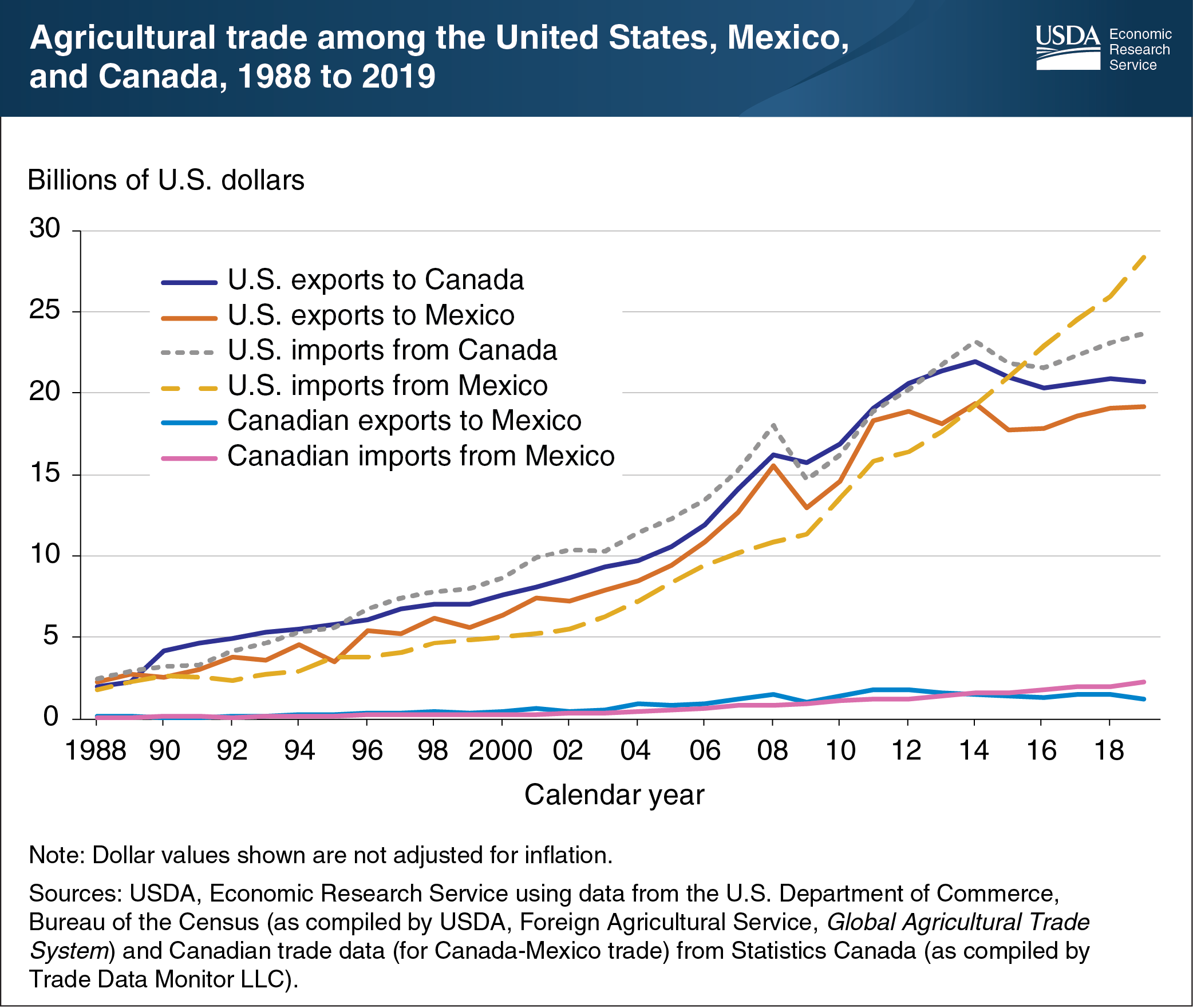United States-Mexico-Canada Agreement (USMCA) provides an opportunity for continued growth in agricultural trade among the three member countries
- by Steven Zahniser
- 7/20/2020

The United States-Mexico-Canada Agreement (USMCA) is a new economic and trade agreement that modifies the terms of the North American Free Trade Agreement (NAFTA), adding provisions for continued growth in agricultural trade among the three member countries. Agriculture has a large and growing stake in interregional trade in the free-trade area created by NAFTA. The total value of intraregional agricultural trade (exports and imports) among all three NAFTA countries reached about $95.3 billion in 2019, compared with $16.6 billion in 1993 (the year before NAFTA’s implementation). Even after taking the effects of inflation into account, this expansion corresponds to an increase in intraregional agricultural trade of 252 percent. Under the ratified new agreement, which took effect on July 1, 2020, all agricultural products that had zero tariffs under NAFTA will continue to have zero tariffs under USMCA. The USMCA adds provisions on biotechnology; geographical indicators; and sanitary and phytosanitary measures, which are measures to protect humans, animals, and plants from diseases, pests, or contaminants. It also provides broader market opportunities for U.S. exports to Canada of dairy, poultry, and egg products. These new provisions, coupled with the continuation of intraregional free trade in almost all agricultural products, provides the foundation for further agricultural trade growth among the United States, Mexico, and Canada. This chart appears in the Economic Research Service’s Amber Waves article, “United States-Mexico-Canada Agreement (USMCA) Approaches the Starting Block, Offers Growth Opportunities for Agriculture.”

